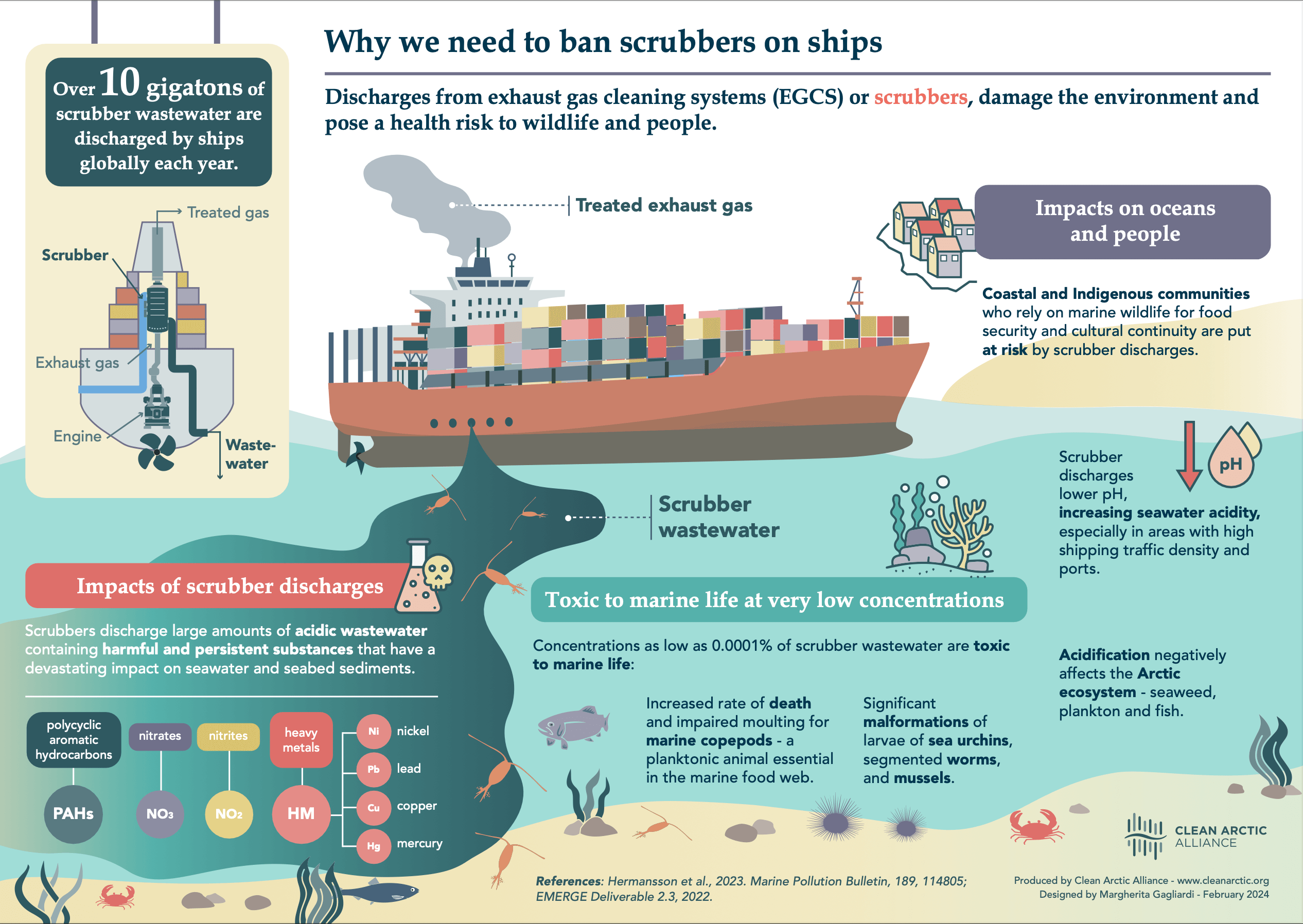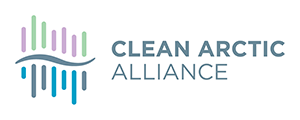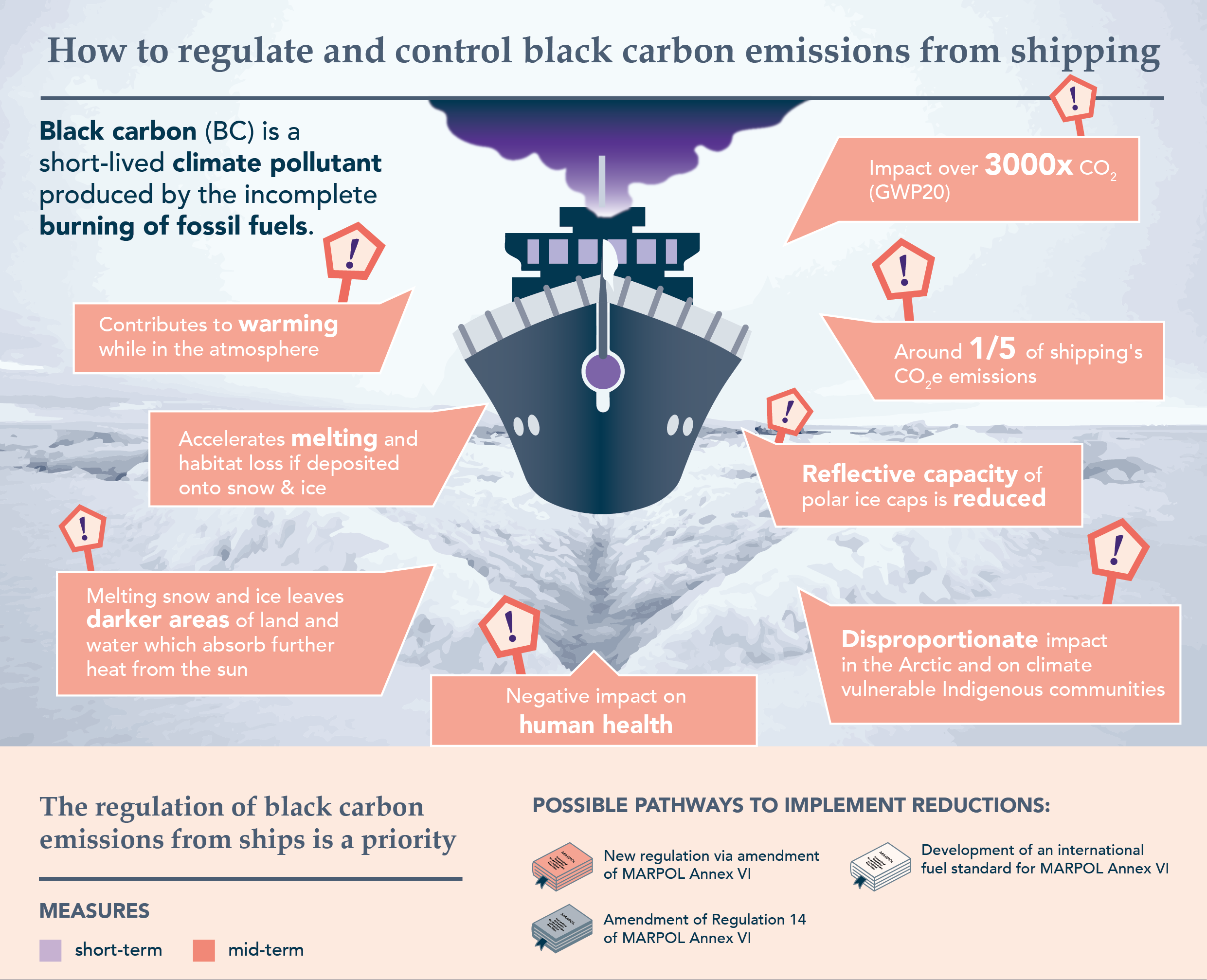
Check out the video of our pre-PPR 11 briefing
19 February, 2024:- As a meeting of the International Maritime Organization’s (IMO) Sub-Committee on Pollution Prevention and Response (PPR 11) opens today in London, the Clean Arctic Alliance is calling on governments to protect the Arctic region by slashing black carbon emissions from shipping.
During this week’s sessions, the IMO is expected to finalise guidelines for reducing the impact on the Arctic of black carbon emissions from international shipping, including recommended control policies and on black carbon emission data collection, monitoring and reporting. However, the Clean Arctic Alliance is calling for a commitment to develop mandatory regulations without any further delay. According to the Arctic Council, shipping in the Arctic is increasing, while black carbon emissions from shipping doubled between 2015 and 2021 [2,3].
Black Carbon
“After 13 years of IMO discussion, it’s high time the shipping industry took action to reduce the impact of black carbon emissions on the Arctic”, said Dr Sian Prior, Lead Advisor to the Clean Arctic Alliance. “The Arctic is recognised to be warming four times faster than the world as a whole, with tipping points likely to be reached. Scientists estimate that the Greenland ice sheet is losing 30 million tonnes of ice per hour and warn that the Atlantic meridional overturning circulation (AMOC) is nearing a devastating tipping point due to the faster than expected melt-off from Greenland’s ice sheet” [4,5,6] .
“Amidst a global climate crisis, it is a travesty that there is still no regulation of black carbon emissions from ships, particularly as it has such a huge impact on polar melting, and given that the climate benefits of cutting this potent short-lived climate forcer are enormous”, said Prior.
In response to a letter sent by the Clean Arctic Alliance on February 12th, calling on for the IMO Secretary General Arsenio Dominguez’s leadership and support for progress on mandatory action to reduce black carbon emissions from ships, the IMO said “the IMO Secretary-General is well aware of the importance of the work of the IMO PPR Sub-Committee to address the impact of Black carbon emissions from ships on the Arctic environment and the need to reduce such emissions. He is looking forward to progress being made in the matter at the forthcoming 11th session of the Sub-Committee.”
“During PPR 11, IMO Member States must agree on the most effective mandatory rules to ensure the shipping sector rapidly reduces these black carbon emissions”, said Clean Arctic Alliance Advisor Bill Hemmings. “This would mean obliging vessels operating in or near to the Arctic to switch away from dirtier fuels to, for example, distillate fuel, which would have the immediate benefit of reducing black carbon emissions by between 50% – 80%. This should then be followed, without delay, by the development of an Arctic fuel standard, and creation of black carbon emission control areas, which would further reduce black carbon emissions in locations in and near the Arctic.” [7]
Scrubbers
During PPR 11, the IMO is also expected to fulfil many tasks with respect to scrubbers.These devices are used to cut air pollution from shipping exhausts but create a water pollution problem instead by pumping acidic wastewater overboard containing heavy metals and polycyclic aromatic hydrocarbons (PAH). The tasks at PPR include assessing the state of technology for discharge water treatment and control; developing regulatory measures and instruments as appropriate; developing a database on local and regional restrictions, and conditions on the discharge water from scrubbers; and to finally establish a database on substances identified in discharge water, covering physico-chemical data, ecotoxicological data and toxicological data, leading to relevant endpoints for risk assessment purposes.
Webinar on Scrubbers: The End of an End of Pipe Solution?
“With recent scientific studies demonstrating how scrubbers are a flawed solution, IMO Member States must agree to end the approval of scrubbers for use on ships as soon as possible, and work towards the implementation of bans on scrubber discharges in their jurisdictional waters”, said Eelco Leemans, Technical Advisor to the Clean Arctic Alliance [8]. “We also recommend that PPR develops and implements regional scrubber bans in ecologically, environmentally, and culturally significant areas such as the Arctic, and work towards a global ban on scrubbers for new ships and phase-out the use on existing ships. All ships equipped with scrubbers can easily switch to cleaner distillate fuel, so instead of relying on scrubbers the shipping sector must work towards energy efficiency and the use of cleaner fuels”.
Heavy Fuel Oil Ban
During PPR 11, the IMO will consider draft guidelines which are linked to the provision of exemptions for ships with protected fuel tanks and waivers of the IMO’s ban on heavy fuel oil (HFO). The IMO adopted a ban on the use and carriage of HFO in Arctic waters in June 2021. However, the ban is far weaker than was required, leaving the Arctic, its Indigenous communities and its wildlife facing the risk of a HFO spill until the end of the decade.
“The IMO ban allows ships in the Arctic to continue to carry and burn significant quantities of HFO in the coming years, resulting in continued emissions of black carbon and ongoing HFO spill risks, and fails to achieve protection of a region that is rapidly changing due to climate warming”, said Andrew Dumbrille, Strategic and Technical Advisor to the Clean Arctic Alliance. “The Clean Arctic Alliance is calling on Arctic coastal states, the United States, Russia, Canada, and Denmark /Greenland, to fully implement the ban on use and carriage of heavy fuel oil in the Arctic, without waivers.”
The IMO’s HFO ban will start to come into force in mid 2024, but only gradually, and will initially only address a small proportion of heavy fuel oil currently being used in the Arctic due to the exemptions and ability of Arctic coastal states to issue waivers.
Norway has already banned HFO on ships throughout its Arctic waters around Svalbard, and its proposal for an emission control area for the Norwegian mainland will mean that the HFO ban is extended further south, although it is a concern that ships could still choose to use ULSFOs (ultra-low sulphur fuel oils – which are largely heavy fuel oils) – or HFOs and scrubbers, instead of moving to cleaner distillate fuels.
About Black Carbon and the Arctic
Black carbon is a short-lived climate pollutant, produced by the incomplete burning of fossil fuels, with an impact more than three thousand times that of CO2 over a 20 year period. It makes up around one-fifth of international shipping’s climate impact. Not only does it contribute to warming while in the atmosphere, black carbon accelerates melting if deposited onto snow and ice – hence it has a disproportionate impact when released in and near to the Arctic. The melting snow and ice exposes darker areas of land and water and these dark patches then absorb further heat from the sun and the reflective capacity of the planet’s polar ice caps is severely reduced. More heat in the polar systems – results in increased melting. This is the loss of the albedo effect.
Declines in sea ice extent and volume are leading to a burgeoning social and environmental crisis in the Arctic, while cascading changes are impacting global climate and ocean circulation. Scientists have high confidence that processes are nearing points beyond which rapid and irreversible changes on the scale of multiple human generations are possible. Scientists say it is now too late to save summer Arctic sea ice, and research has shown that “preparations need to be made for the increased extreme weather across the northern hemisphere that is likely to occur as a result.”
Black carbon also has a negative impact on human health, and recent research has found black carbon particles in the body tissues of foetuses, following inhalation by pregnant mothers.
The need to reduce emissions of black carbon because of both the climate and health impacts has been long recognised. On land, considerable effort has been made to ban dirtier fuels in power stations, to install diesel particulate filters on land-based transport, and to improve the burning of dry wood – all to reduce emissions of black carbon and improve air quality. However, at sea the same efforts have not yet been made.
Find out more about black carbon
Infographic: How to regulate and control black carbon emissions from shipping
ENDS
PPR 11 Papers:
PPR 11-6-3 – Developing Concrete Measures to Reduce the Impact of Black Carbon Emissions from International Shipping
https://cleanarctic.org/2023/12/13/ppr-11-6-3-developing-concrete-measures-to-reduce-the-impact-of-black-carbon-emissions-from-international-shipping/
PPR 11-6-4 – Comments on PPR 11/6, PPR 11/6/1 and PPR 11/6/3 – Developing Concrete Measures to Reduce the Impact of Black Carbon Emissions from International Shipping
https://cleanarctic.org/2023/12/15/ppr-11-6-4-comments-on-ppr-11-6-ppr-11-6-1-and-ppr-11-6-3-developing-concrete-measures-to-reduce-the-impact-of-black-carbon-emissions-from-international-shipping/
PPR 11-7-3 – On the need to ban scrubbers: Evaluation and Harmonization of Rules and Guidance on the Discharge of Discharge Water From EGCs Into the Aquatic Environment, Including Conditions and Areas
https://cleanarctic.org/2023/12/15/ppr-11-7-3-on-the-need-to-ban-scrubbers-evaluation-and-harmonization-of-rules-and-guidance-on-the-discharge-of-discharge-water-from-egcs-into-the-aquatic-environment-including-conditions-and-areas/
Contact:
Dave Walsh, Communications Advisor, [email protected], +34 691 826 764
Notes:
Check out the video of our pre-PPR 11 briefing
[1] https://www.imo.org/en/MediaCentre/MeetingSummaries/Pages/default.aspx
[2] Arctic Council: Arctic Shipping Update: 37% Increase In Ships In The Arctic Over 10 Years
https://arctic-council.org/news/increase-in-arctic-shipping/
[3] Black carbon emissions from Arctic shipping: A Review of Main Emitters and Time Trends, Liudmila Osipova, Ph.D. International Council on Clean Transportation
https://cleanarctic.org/wp-content/uploads/2023/04/BC_in_Arctic_prePPR10.pdf
[4] Nature: The Arctic has warmed nearly four times faster than the globe since 1979
https://www.nature.com/articles/s43247-022-00498-3
[5] Nature: Ubiquitous acceleration in Greenland Ice Sheet calving from 1985 to 2022
https://www.nature.com/articles/s41586-023-06863-2.epdf
[6] Science Advances: Physics-based early warning signal shows that AMOC is on tipping course
https://www.science.org/doi/10.1126/sciadv.adk1189
[7 ]International Council on Clean Transportation: Be Truly “Fit For 55” By Adding Black Carbon Emissions From Ships
https://theicct.org/fit-for-55-black-carbon-from-ships-aug22/
International Maritime Organization: Fourth Greenhouse Gas Study 2020
https://www.imo.org/en/ourwork/Environment/Pages/Fourth-IMO-Greenhouse-Gas-Study-2020.aspx
The 4th IMO GHG Study recognises a switch to distillate reduces Black Carbon emissions per kilogram of fuel consumption by up to 79% in 2-stroke engines and by up to 42% in four-stroke engines
[8] Finnish Meteorological Institute: Environmental impacts of exhaust gas cleaning systems in the Baltic Sea, North Sea, and the Mediterranean Sea area
https://helda.helsinki.fi/items/bb939453-8311-4e1e-88c7-4a3e8b9e80a3
EMERGE: Evaluation, control and Mitigation of the EnviRonmental impacts of shippinG Emissions
https://emerge-h2020.eu/
About the Clean Arctic Alliance
Made up of 22 not-for-profit organisations, the Clean Arctic Alliance campaigns to persuade governments to take action to protect the Arctic, its wildlife and its people.
Members include: The Altai Project, Alaska Wilderness League, Bellona, Clean Air Task Force, Ecology and Development Foundation ECODES, Environmental Investigation Agency, Friends of the Earth US, Global Choices, Green Global Future, Green Transition Denmark, Greenpeace, Iceland Nature Conservation Association, International Cryosphere Climate Initiative, Nature And Biodiversity Conservation Union, Ocean Conservancy, Pacific Environment, Seas At Risk, Surfrider Foundation Europe, Stand.Earth, Transport & Environment, WWF and Zero.
More more information visit https://www.cleanarctic.org/


